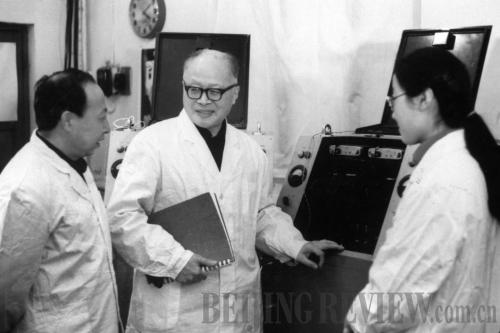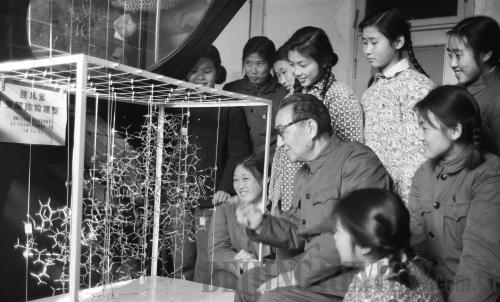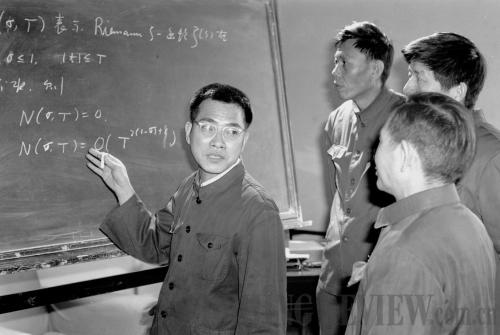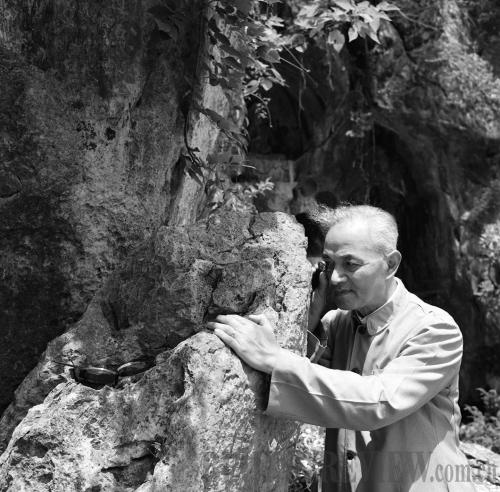|
CAS has been running a pilot knowledge innovation program since 1998. Through the program, it has adjusted key research areas, reshuffled its organizational structure and strengthened cooperation with local research organizations. Observers say that it has allocated resources more rationally, made the personnel system more flexible and improved the assessment system of scientific achievements. The program, they say, has given birth to a large number of significant innovations and breakthroughs.
 |
|
BOMB SCIENTIST: Nuclear physicist Wang Ganchang (center) talks with his colleagues in Beijing in 1981. He participated in the research and development of China's atomic and hydrogen bombs (XINHUA) |
|

|
|
MYSTERIOUS STRUCTURE: Bei Shizhang, the founder of China's research initiatives in biophysics, radiobiology and cosmobiology, uses a model to teach middle school students the molecular structure of insulin (WANG HUI) |
 |
|
LEADING THINKER: Famous mathematician Chen Jingrun (left) discusses math problems with other mathematicians in 1986 (XINHUA) |
 |
|
INSPECTING THE PAST: China's leading geologist Li Siguang observes a fossil with a magnifying glass in June 1957. Li was the founder of China's geomechanics research. His work led to the discovery of large oil fields in China (XINHUA) |
CAS Milestones
1950s to early 21st century: China's nuclear bomb, missile, satellite, manned space and lunar probe programs were all developed
September 1965: Synthetic bovine insulin, the world's first synthesized protein, was created
April 1973: Chen Jingrun published a paper on Goldbach's conjecture, contributing significantly to number theory
August 2008: The world's first quantum repeaters debuted. The device was developed by a team of Chinese and foreign researchers
June 4, 2009: Large Sky Area Multi-Object Fiber Spectroscopic Telescope (LAMOST), the biggest of its kind in the world, was developed and readied for full operation
|
